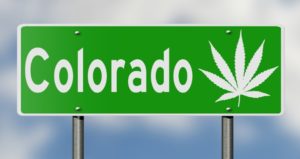Colorado was among the first two states to legalize recreational marijuana, but that doesn’t mean the state is without its marijuana detractors. Since 2012, when Coloradans overwhelmingly voted to add Amendment 64 to their constitution, the state has faced a number of battles with groups trying to limit or eliminate recreational usage.
If Coloradans want to continue to have access to legal weed, they need to understand what the opposition is doing and work against it. Here are a few ongoing initiatives striving to hamper legal hash and how weed enthusiasts in the Centennial State can keep Colorado in the green.
Local Challenges (2012-present)
Built into Colorado Amendment 64 is a stipulation that local governments can continue to restrict recreational marijuana sales and usage. Almost as soon as the state passed its recreational marijuana laws in 2012, cities and towns began challenging the law and working to prevent recreational usage from entering their borders. This isn’t limited to small, rural hamlets, either; Colorado Springs, the second-largest city in the state, banned recreational marijuana in 2013. It’s conceivable that an effort by city councils to control marijuana in their borders could effectively nullify the amendment, making legal marijuana impossible to find despite its legal status at the state level.
Admittedly, Colorado Springs seems to be kicking itself with regards to its seeming slapdash choice to ban recreational marijuana. Not only can Colorado Springs residents freely travel to other parts of Colorado to partake in legal weed, but the city is sorely missing out on a treasure trove of taxes. Some estimates suggest that Colorado Springs has so far lost access to upwards of $20 million in taxes, which could have gone to improving schools, roads, small businesses and more. The story is similar in other cities where recreational marijuana isn’t permitted.
Thanks to local initiatives to overturn local challenges to Amendment 64, it seems unlikely that city councils will be able to efficiently restrict recreational usage. However, there are other threats to weed that Colorado marijuana enthusiasts should be aware of.
Limited Edibles (2017)
In October 2017, Colorado dispensaries had to pull a large number of weed edibles off their shelves — but not because of any kind of contamination. Rather, the state legislature determined that gummies, candies and other edibles shaped to look like animals, fruit or humans were too tempting to children, who could suffer serious consequences by eating too many cannabis-infused sweets.
In truth, the likelihood of a child overdosing on marijuana is low — but because the human body is slow to absorb THC and CBD through digestion, it can take several hours for children to manifest symptoms of marijuana intoxication after eating edibles. Thus, a child could devour a whole bag of weed gummies without realizing they aren’t safe, and that much marijuana could cause severe symptoms in tiny bodies. The marijuana itself is unlikely to cause harm, but a high child could easily fall down the stairs, drown or otherwise put themselves in harm’s way.
Since 2017, dispensaries have only been allowed to sell edibles in geometric shapes with large, prominent potency labels. Undeniably, this was a smart and fair law that has the potential to save lives, but it is an example of how legislation can slowly strip away access to marijuana products. Enthusiasts should carefully weigh the benefits and drawbacks of every proposed regulation to ensure that only those with merit get passed.
Potency Limits (2016-present)
Since recreational marijuana legislation passed in Colorado, marijuana growers have gained more agency to experiment with breeding new strains. As a result, the THC content in some strains available at Colorado dispensaries is off the charts — as high as 28 percent. In fact, there are strains with THC content as high as 44 percent, but these typically aren’t available for public purchase. What’s more, extracts and concentrates have average THC content around 65 percent, but they can go as high as 80 percent.
Though THC overdoses won’t directly result in death, they can have extremely distressing repercussions, like extreme confusion, panic, increased heart rate and blood pressure, hallucinations and severe nausea and vomiting. Emergency room visits for marijuana-related issues has increased roughly 300 percent since recreational use was legalized in 2012.
These are the driving reasons that some groups are pushing for limits to marijuana potency. In 2016, a major push was made to restrict THC content of all marijuana products to 16 percent. Fortunately, the marijuana industry struck back against this legislation and the initiative failed. Unfortunately, another attempt at limiting potency is seeming to pop up again in 2020, with murmurs about a bill that even further restricts THC to 2 or 3 percent. Enthusiasts need to remain vigilant for such efforts and work to educate the public about THC to prevent an unfair restriction of rights.
Legal, recreational weed is now part of Colorado’s state constitution, so it is unlikely to disappear entirely anytime soon. Still, as is true with any right, we need to continue fighting to protect recreational marijuana use for all.

